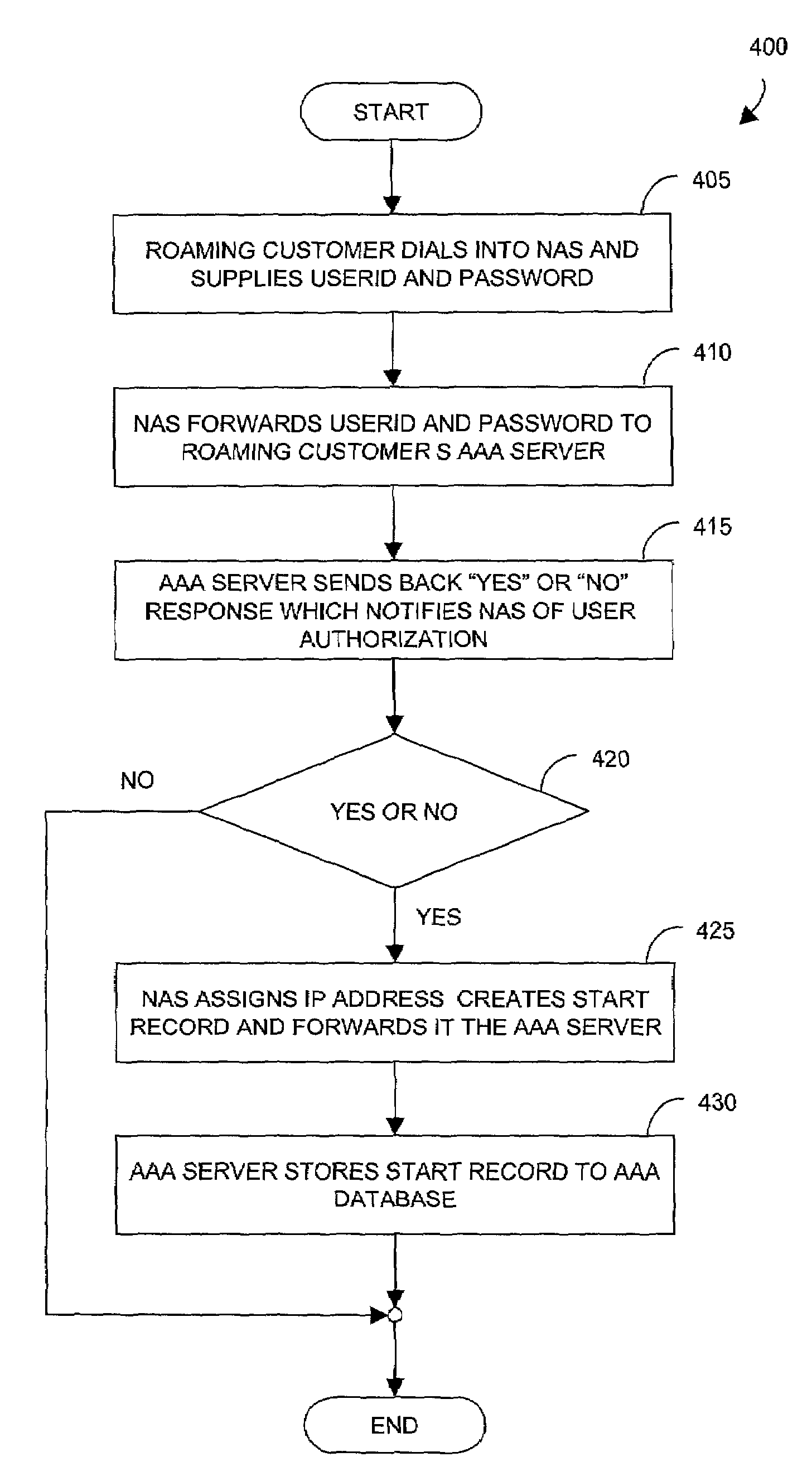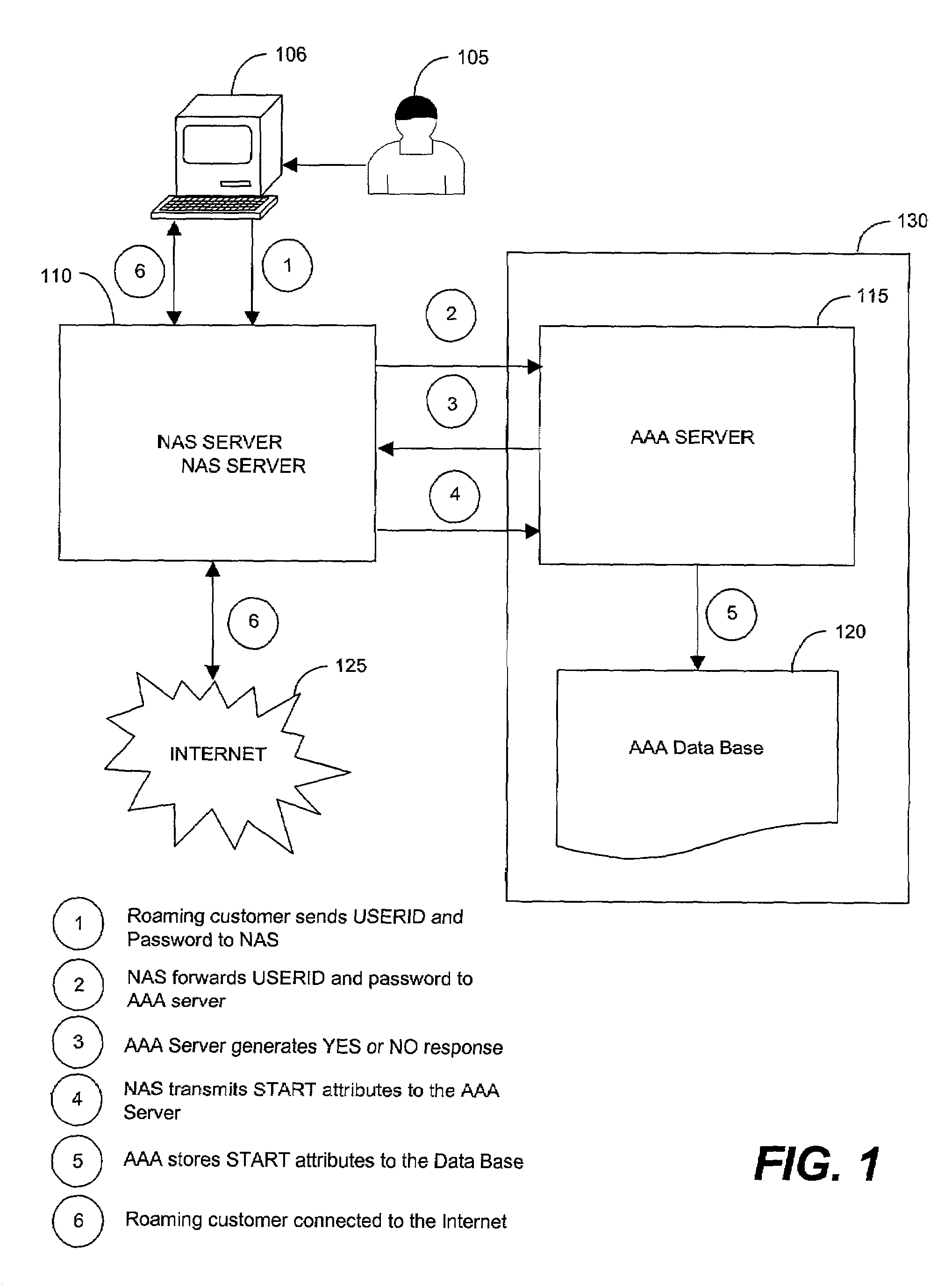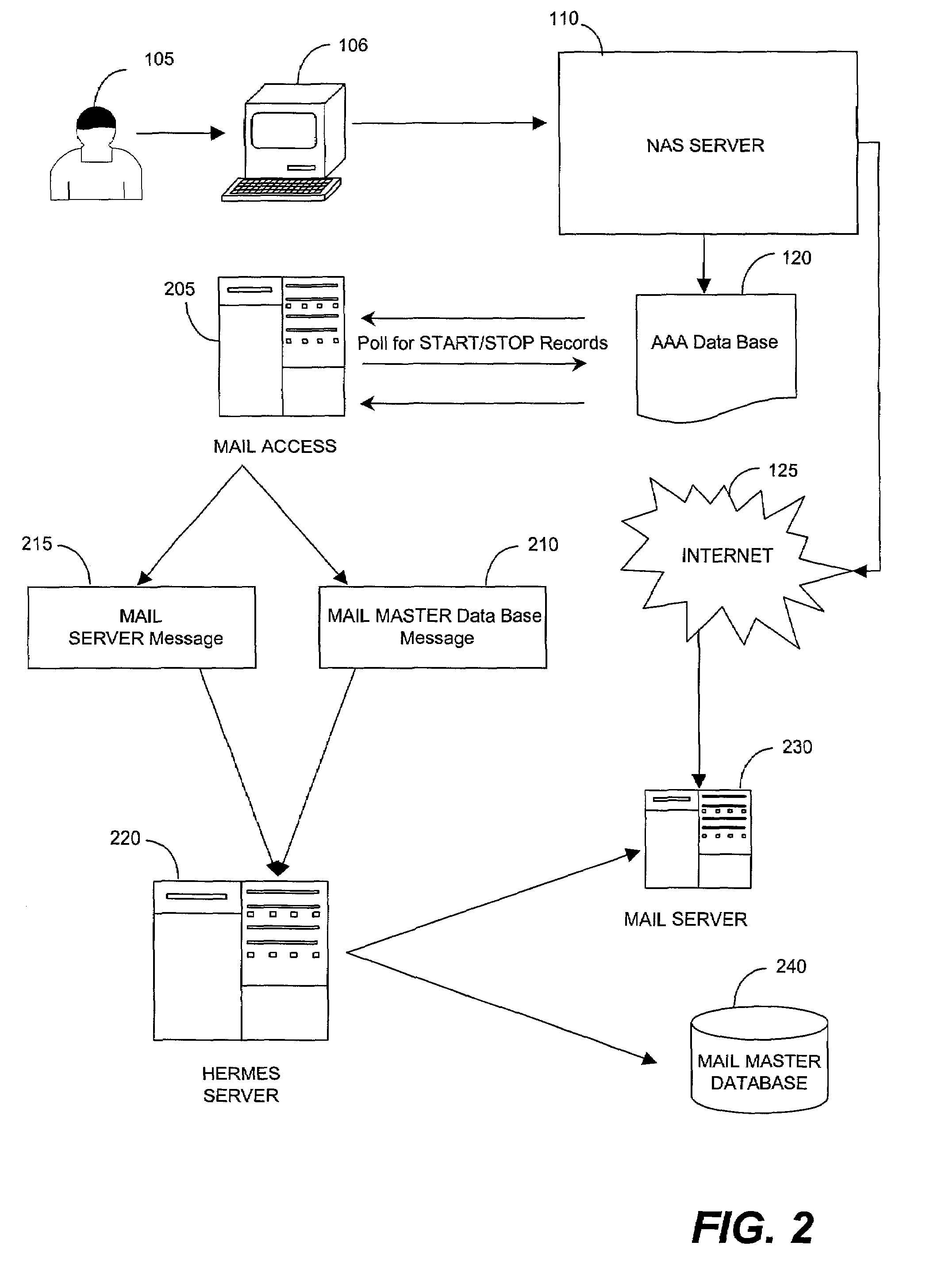Foreign network SPAM blocker
a foreign network and spam technology, applied in the field of electronic mail (“ email”) processing, can solve the problems of affecting or even stopping the transmission of legitimate e-mails by overwhelming e-mail servers, affecting the quality of legitimate e-mails, etc., and achieve the effect of virtually eliminating foreign spam from the remote server
- Summary
- Abstract
- Description
- Claims
- Application Information
AI Technical Summary
Benefits of technology
Problems solved by technology
Method used
Image
Examples
Embodiment Construction
[0021]FIG. 1 is a block diagram of an exemplary method to connect a roaming customer to the Internet through a foreign network access server (NAS). The roaming customer 105 accesses the foreign NAS 110 using an Internet device 106 and inputs a user identification code (USERID) and password. Typically, the roaming customer 105 will access the foreign NAS 110 using a personal computer connected via a modem because a personal computer is still the most convenient device to use to connect to the Internet. However, a variety of Internet devices 106, such as web-enabled cellular telephones, personal digital assistants (PDA's), web-enabled pagers, any communication devices, web-enabled data transfer devices, web-enabled entertainment devices, interactive television, mobile radiotelephones, Internet appliances, and the like may be used by the roaming customer 105 to access the foreign NAS 100. Once the user has contacted the foreign NAS 110, the foreign NAS 110 transmits the roaming custome...
PUM
 Login to View More
Login to View More Abstract
Description
Claims
Application Information
 Login to View More
Login to View More - R&D
- Intellectual Property
- Life Sciences
- Materials
- Tech Scout
- Unparalleled Data Quality
- Higher Quality Content
- 60% Fewer Hallucinations
Browse by: Latest US Patents, China's latest patents, Technical Efficacy Thesaurus, Application Domain, Technology Topic, Popular Technical Reports.
© 2025 PatSnap. All rights reserved.Legal|Privacy policy|Modern Slavery Act Transparency Statement|Sitemap|About US| Contact US: help@patsnap.com



